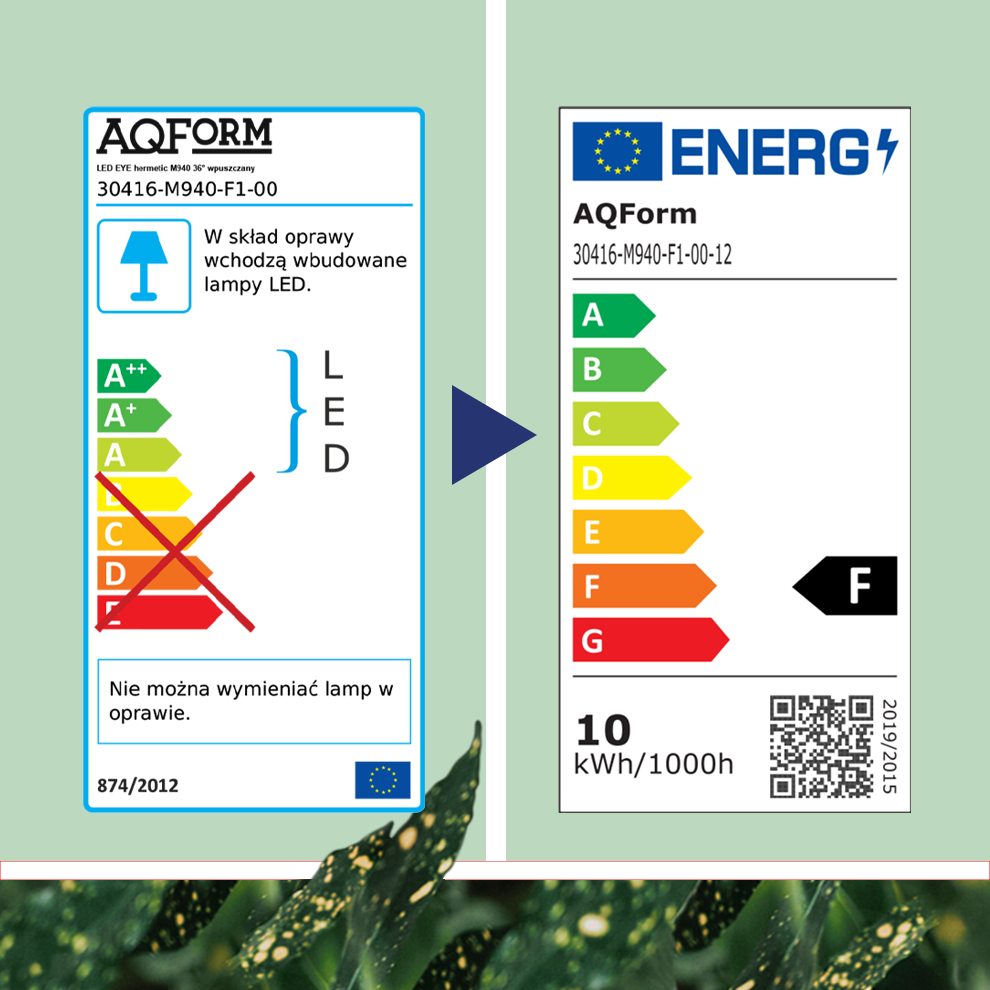From 1 September 2021, a new systematics of energy classes for light sources comes into force. This change has already affected electronics and household appliances, now it is also time for the lighting industry. Discover the new energy class labeling system and stay up to date with the simplified nomenclature!
The energy label is a sign informing about the key features of the product, including about its energy-saving efficiency. By choosing consciously, we can not only save by reducing our electricity bills, but also contribute to the reduction of greenhouse gas emissions to the atmosphere. Continuous technological progress and the development of products with an increasingly higher energy-saving class meant that the energy labels introduced in 1995 by the EU directive had to be changed to better correspond to modern realities. So what has changed?

First change: a new, simplified scale
As of 1 September 2021, the designations "A +", "A ++" and "A +++" will disappear for good. To facilitate the nomenclature and to provide space for further technological development, the European Union decided to abandon the pluses and return to the previous scale, marked with letters from A to G. The previous A class will be replaced by C, D, E or F markings, while A and B letters will be reserved for future devices that will have much lower power consumption than is currently achievable. This does not mean that products from classes C, D, E, F or even G are less efficient! The change results only from updating the markings, which better correspond to the contemporary realities of the market. As a result, the labels will now be easier to read and the selection of the appropriate light source will be even simpler. The colors, on the other hand, remain unchanged - green still symbolizes the most effective A-class, while red - the G-class.
Second change: QR code
Another change is the introduction of the QR code in the bottom right corner of the label. This will make it possible to easily check the parameters of the light source and detailed information on the energy consumed using a smartphone. This makes it much easier to compare several products and make the right decision. The introduction of QR codes is also associated with the expansion of the EPREL database, i.e. the European Product Registry of Energy Labeling. This will allow all technical documentation to be gathered in one place, and thus will ensure market transparency, while providing easier access to detailed information.
Third change: better control of energy consumption
In addition to simplifying the scale and introducing QR codes, the new labels provide information on estimated energy consumption in kWh per 1000 hours. This makes monitoring your current electricity costs even easier!
The new labels, although without pluses, are a plus!
According to research conducted by the European Union in 2019, almost 80% of consumers pay attention to the information contained in energy labels when shopping. This result clearly shows that the data on the label has a significant impact on consumer decisions. The simplification of scale and the inclusion of new information provide better readability, leaving space for even more efficient products in the future. And although you will no longer find the "+++" on labels, the changes are going to be… a plus!